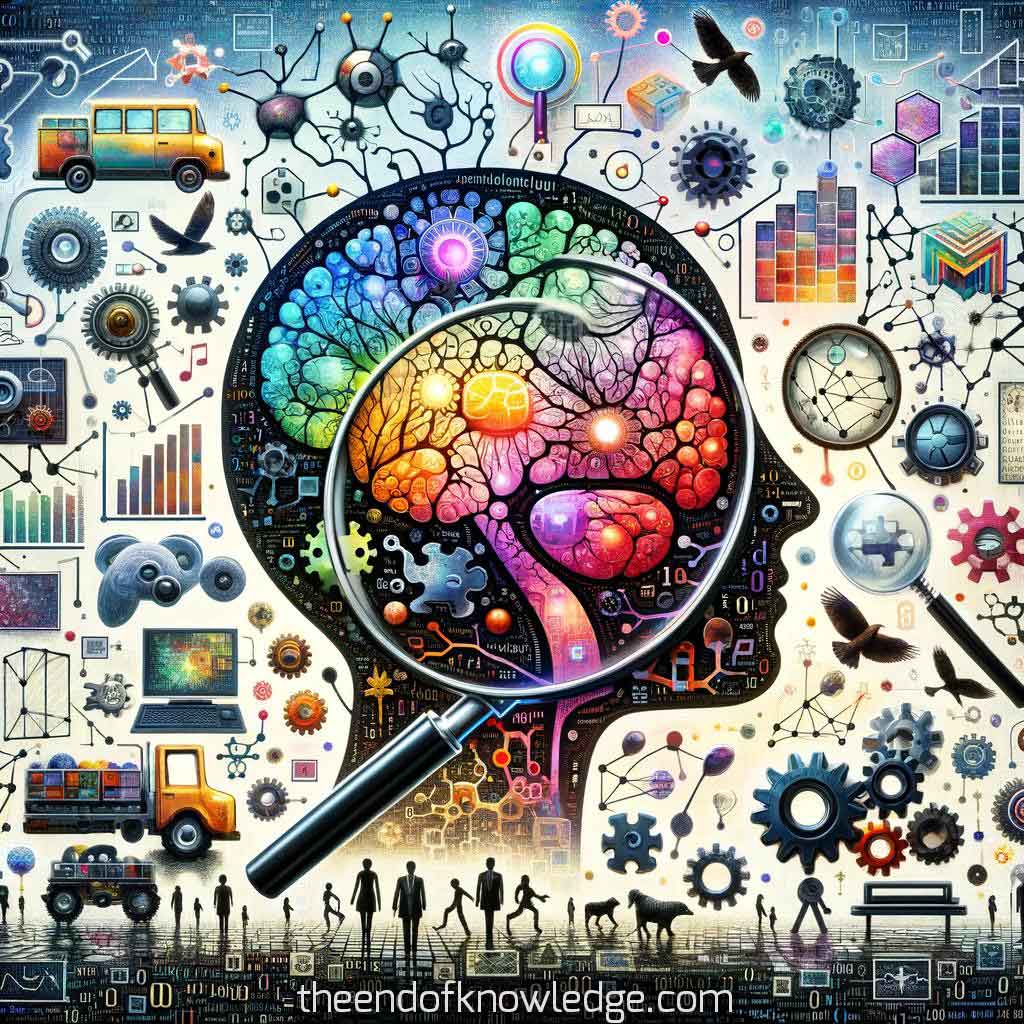 >
>
Concept Graph (using Gemini Ultra + Claude3):
Custom ChatGPT resume of the OpenAI Whisper transcription:
1.- Introduction to Self-Supervised Learning in Vision: Ishan Misra, a research scientist at Facebook AI Research, discusses the application of self-supervised learning in computer vision, aiming to achieve success similar to that of self-supervised learning in language models like GPT-3.
2.- The Concept of Self-Supervised Learning: Self-supervised learning involves training systems to understand the visual world with minimal human intervention, using data as its own source of supervision, which contrasts with traditional supervised learning reliant on human-labeled data.
3.- Challenges of Supervised Learning: Misra discusses the scalability issues of supervised learning, highlighting the extensive effort required to label datasets like ImageNet and the limitations this approach faces in covering the breadth of concepts needed for comprehensive visual understanding.
4.- Self-Supervised Learning in NLP and Vision: The success of self-supervised learning in natural language processing (NLP), particularly in models predicting masked words, is mentioned as an inspiration for applying similar techniques in computer vision, such as predicting video frames or understanding image relationships without explicit labeling.
5.- Techniques for Self-Supervised Learning in Vision: Misra explains innovative methods like using different crops of an image to teach models about the inherent consistency in visual data, aiming to learn representations of the world useful for further learning tasks without explicit human annotations.
6.- Self-Supervised Learning as a Path to Common Sense Understanding: The podcast touches on the potential of self-supervised learning to imbue machines with common sense about the physical world, such as understanding object weight or material properties, through observation or interaction, without needing direct human labeling.
7.- The Role of Data Augmentation in Self-Supervised Learning: Data augmentation, including varying lighting conditions or cropping images, plays a crucial role in self-supervised learning by creating varied examples from limited data, helping models learn robust representations by comparing and contrasting these variations.
8.- The Evolution and Impact of Transformers in Vision: Misra discusses the significant impact of transformers and self-attention mechanisms, originally developed for NLP, on computer vision tasks, enabling models to consider broader context and relationships within visual data for improved understanding.
9.- Contrastive Learning and Energy-Based Models: The conversation delves into contrastive learning, where models learn to identify similarities and differences between data points, and energy-based models, which frame learning tasks in terms of minimizing or maximizing energy functions, offering a unifying perspective on various learning paradigms.
10.- Comparing Challenges in Vision and Language: Misra offers insights into the inherent challenges of computer vision compared to natural language processing, arguing that vision involves a more fundamental form of intelligence observable across various species, highlighting the complexity and potential of visual understanding in AI research.
11.- Exploration of Imagination in Data Augmentation: The discussion delves into the potential of leveraging imagination for data augmentation in neural networks, suggesting that introducing novel, yet physically consistent scenarios, could enhance model training beyond traditional methods.
12.- Understanding Scene Composition Through Occlusion: The conversation touches on occlusion-based augmentation techniques, highlighting their utility in teaching models to understand scene composition by intentionally hiding parts of images, thereby forcing the model to infer missing information.
13.- Importance of Data Augmentation: Misra emphasizes the critical role of data augmentation in self-supervised learning, stating its significance in achieving substantial improvements by generating varied learning scenarios that help models develop robust feature representations.
14.- Parametrization of Data Augmentation: A discussion on the potential benefits of making data augmentation a learnable part of the model training process, suggesting that integrating augmentation learning could lead to more significant advancements in self-supervised learning.
15.- Challenges of Arbitrary Data Augmentation: The dialogue covers the limitations of current data augmentation practices, such as arbitrary color changes, which may not align with realistic variations, underscoring the need for context-aware augmentations that reflect plausible real-world transformations.
16.- SEER: Self-Supervised Pre-Training in the Wild: Misra introduces SEER, a project aimed at training large-scale models using uncurated internet images, challenging the notion that self-supervised learning is overfit to curated datasets like ImageNet and exploring its capabilities with real-world data.
17.- Efficiency of Convolutional Networks and Transformers: The conversation transitions to discussing the effectiveness of different architectural choices for self-supervised learning, including convolutional networks and transformers, highlighting their respective strengths and potential based on the task at hand.
18.- The Concept of RegNet: Misra explains RegNet, a network design that optimizes computational efficiency and accuracy, detailing its advantages in handling large-scale data by balancing computational demands with performance, making it suitable for extensive self-supervised learning tasks.
19.- Impact of Architecture and Data Augmentation on Learning: The discussion compares the influence of neural network architectures and data augmentation techniques on the learning process, suggesting that the choice of augmentation and learning algorithm plays a more critical role than the architecture itself.
20.- Active Learning and Its Potential: Misra explores active learning, emphasizing its importance in efficiently utilizing data by enabling models to query information that maximizes learning potential, potentially reducing the amount of labeled data required for training robust models.
Interview byLex Fridman| Custom GPT and Knowledge Vault built byDavid Vivancos 2024